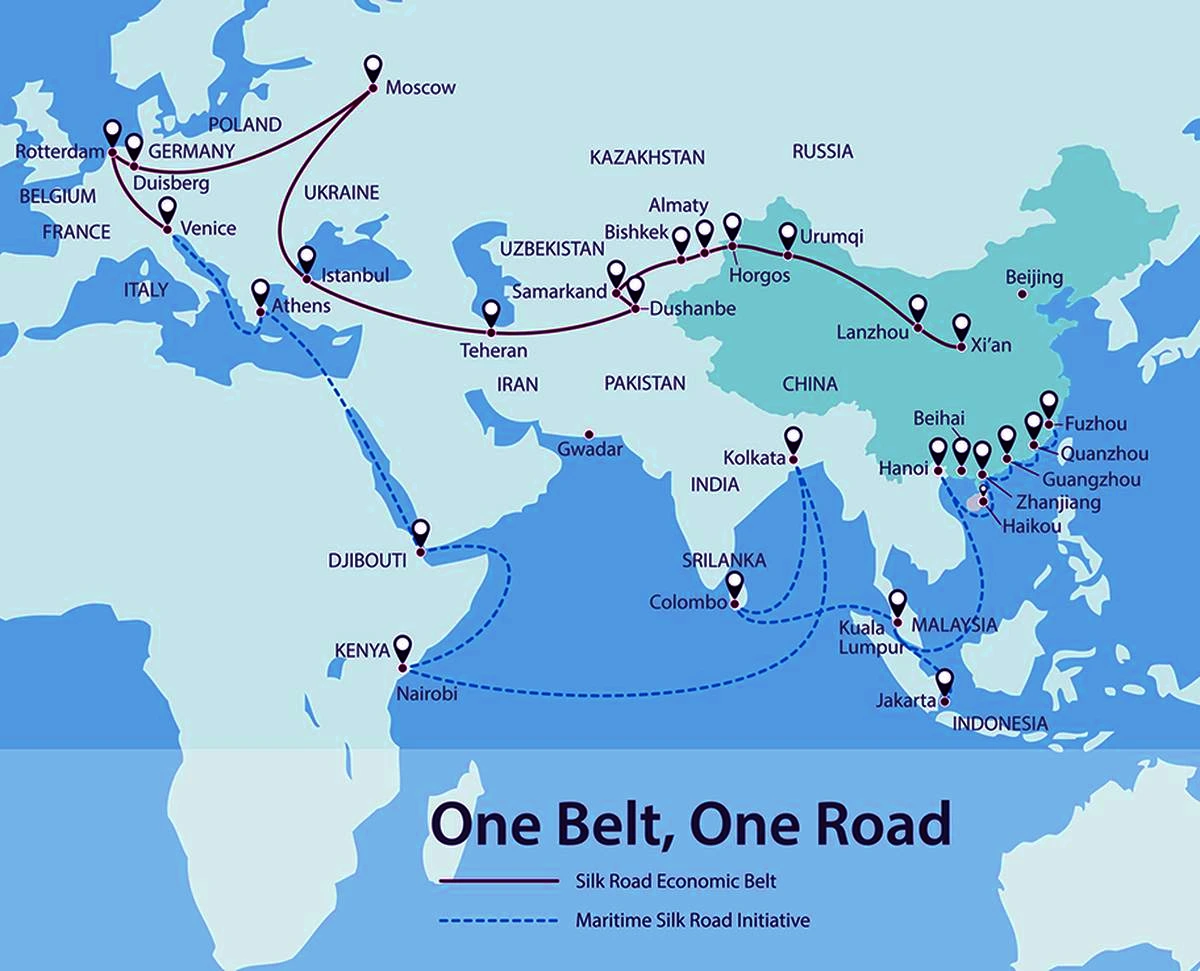Context: Italy has formally withdrawn from China Belt and Road initiative (BRI). Italy, a member of the European Union and NATO, signed up BRI in 2019 under the government of then Prime Minister Giuseppe Conte.
Why did Italy join the Belt and Road initiative?
- Italy signed it when the populist Five Star Movement party-led government promoted it as a way of increasing trade with China while getting investments in major infrastructure projects.
Why has Italy withdraws from China Belt and Road Initiative?
- Rising Trade Deficit & lack of Investment: In the intervening years, Italy’s trade deficit with China has ballooned from 20 billion euros to 48 billion euros ($21.5 billion to $51.8 billion.)
- Promised investments in Italian ports were never achieved.
About China Belt and Road initiative
- Genesis: In 2013, Chinese President Xi Jinping, during his visits to Kazakhstan and Indonesia, expressed a vision to build a Silk Road Economic Belt (SERB) and a 21st Century Maritime Silk Road (MSR), to break the “bottleneck” in Asian connectivity.

- Called “One Belt, One Road” in Chinese, the Belt and Road Initiative started as a program for Chinese companies to build transportation, energy and other infrastructure overseas funded by Chinese development bank loans.
- Goal: It was launched in 2013 to boost trade and the global economy by enhancing China’s connectivity with other regions, resembling a modern Silk Road linking China to the Middle East and Europe.
- Investments: Estimated $1 trillion
- Key Principles:
- Policy coordination
- Infrastructure connectivity
- Trade
- Financial integration
- people-to-people connections
- Industrial cooperation
- Participation: At the tenth anniversary of the initiative, the Chinese government declared that more than 150 countries and 30 international organizations have embraced the BRI.
- China has hosted three BRI Forums in the years 2017, 2019, and 2023.
Must read the linked article China Celebrating 10th Anniversary of Belt and Road Initiative here.
China’s Motivations Behind Belt and Road Initiative
- China’s rivalry with the US: The vast majority of Chinese international trade passes by sea through the Malacca strait off the coast of Singapore which is a major US ally.
- The initiative is integral to China’s efforts to create its own more secure trade routes.
- Investment Opportunities: The Belt and Road framework provides an alternative market for China’s vast state-owned companies beyond the borders of China.
- Fostering Inclusive Growth for China’s Central Provinces: The Belt and Road is seen as a crucial element in the Chinese government’s efforts to stimulate economies of the country’s central provinces, which historically lag behind richer coastal areas.
Progress of Belt and Road Initiative in South Asia
- Pakistan: According to the master plan for Gwadar’s development under BRI, approved in 2020, it would increase the city’s GDP to $30 billion by 2050 and create over a million jobs.
- Sri Lanka: In Sri Lanka, multiple infrastructure projects that were being financed by China before the launch of the BRI in 2013, many of them conceivably came under its fold.
- For Example: China developed the Colombo International Container Terminal (CICT) at the Colombo port, where a Chinese state-owned firm holds an 85 per cent stake under a 35-year Build-Operate-Transfer (BOT) agreement.
- Nepal: Kathmandu formally joined the Belt and Road Initiative in 2017, submitting a list of 35 infrastructure projects it wished China to finance.
- Bangladesh: Bangladesh, which joined the BRI in 2016, has been promised the second-highest belt and road investment by China (about $40 billion) in South Asia after Pakistan.
Concerns associated with China’s Belt and Road Initiative
- Debt Trap Diplomacy: Nations have borrowed heavily from China for BRI projects, and they now face challenges in repaying these loans. This has led to accusations of “debt trap diplomacy,” where countries risk losing control of strategic assets if they default on their loans.
- For example, Sri Lanka had to hand over control of the Hambantota port to China due to mounting debt.
India’s Stand
- India strongly opposes China’s Belt and Road Initiative (BRI), particularly the China-Pakistan Economic Corridor (CPEC), because it passes through Pakistan-occupied Kashmir (PoK).
- India’s main concern is that this project disregards its sovereignty and territorial integrity.
![]() 8 Dec 2023
8 Dec 2023

